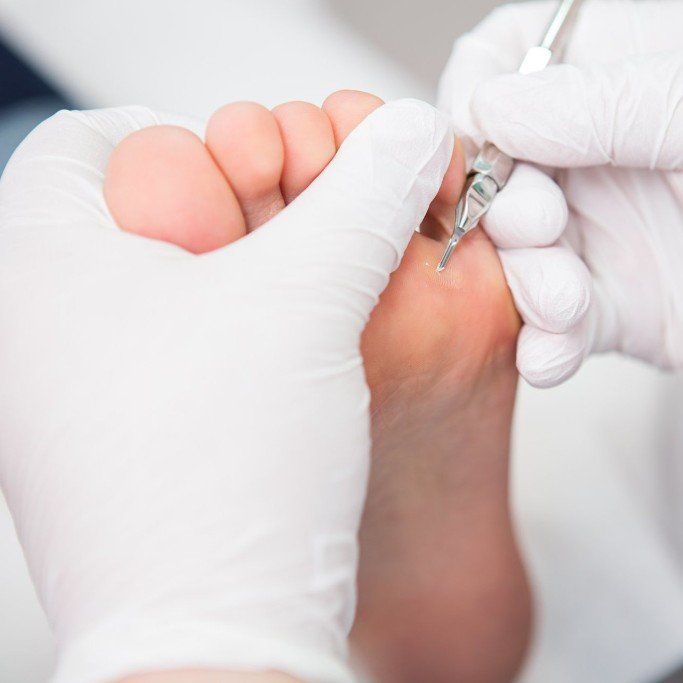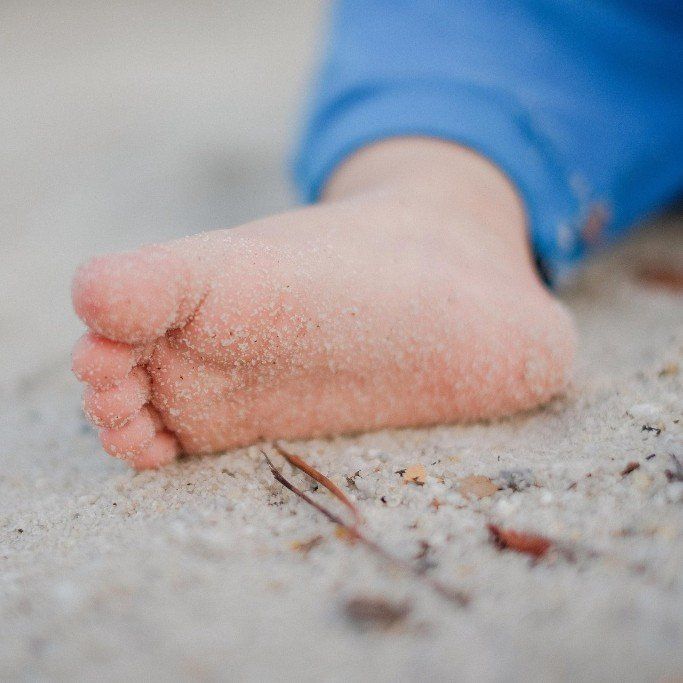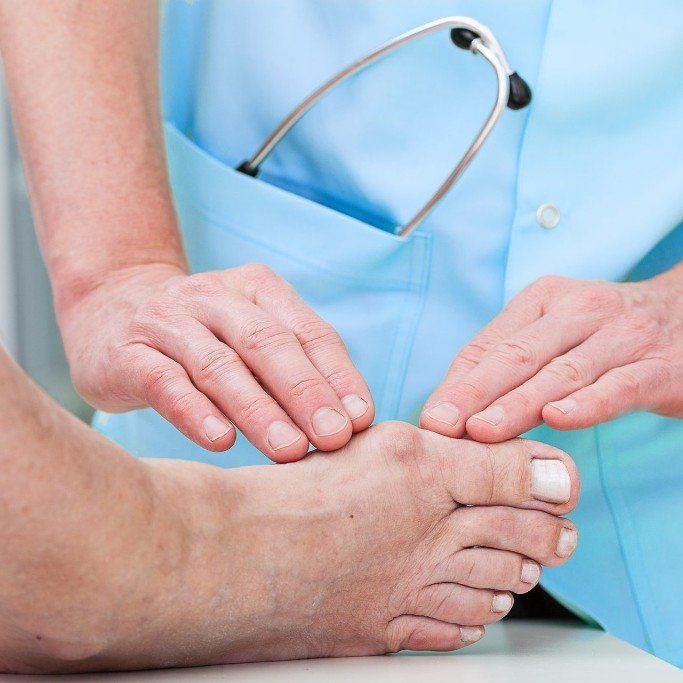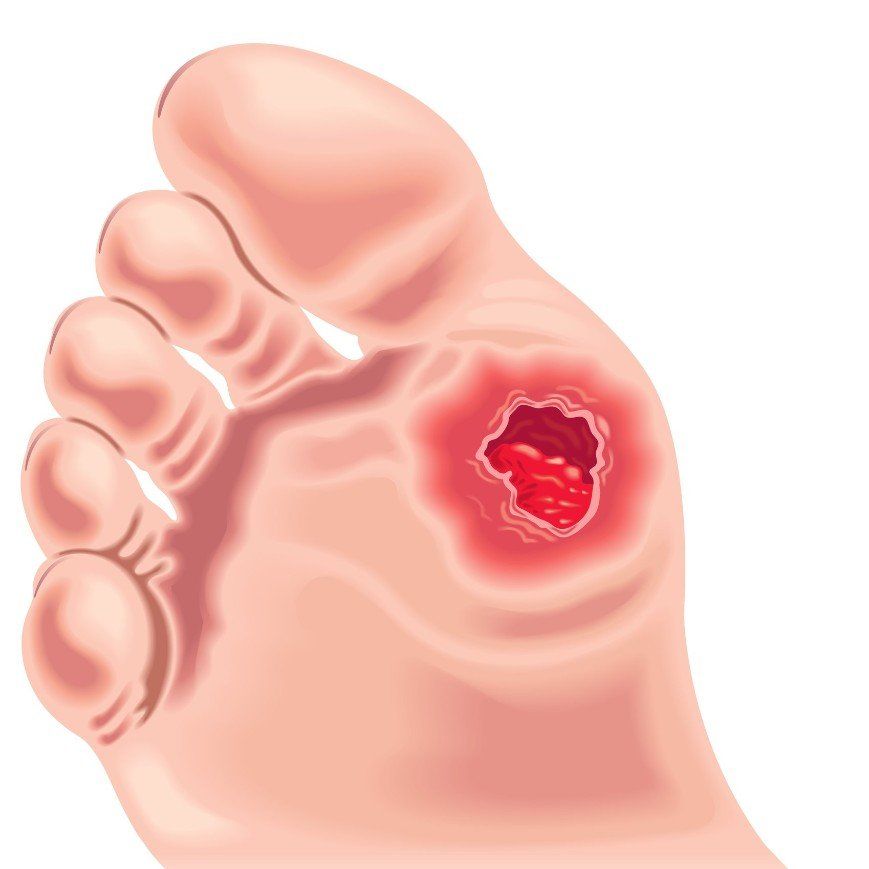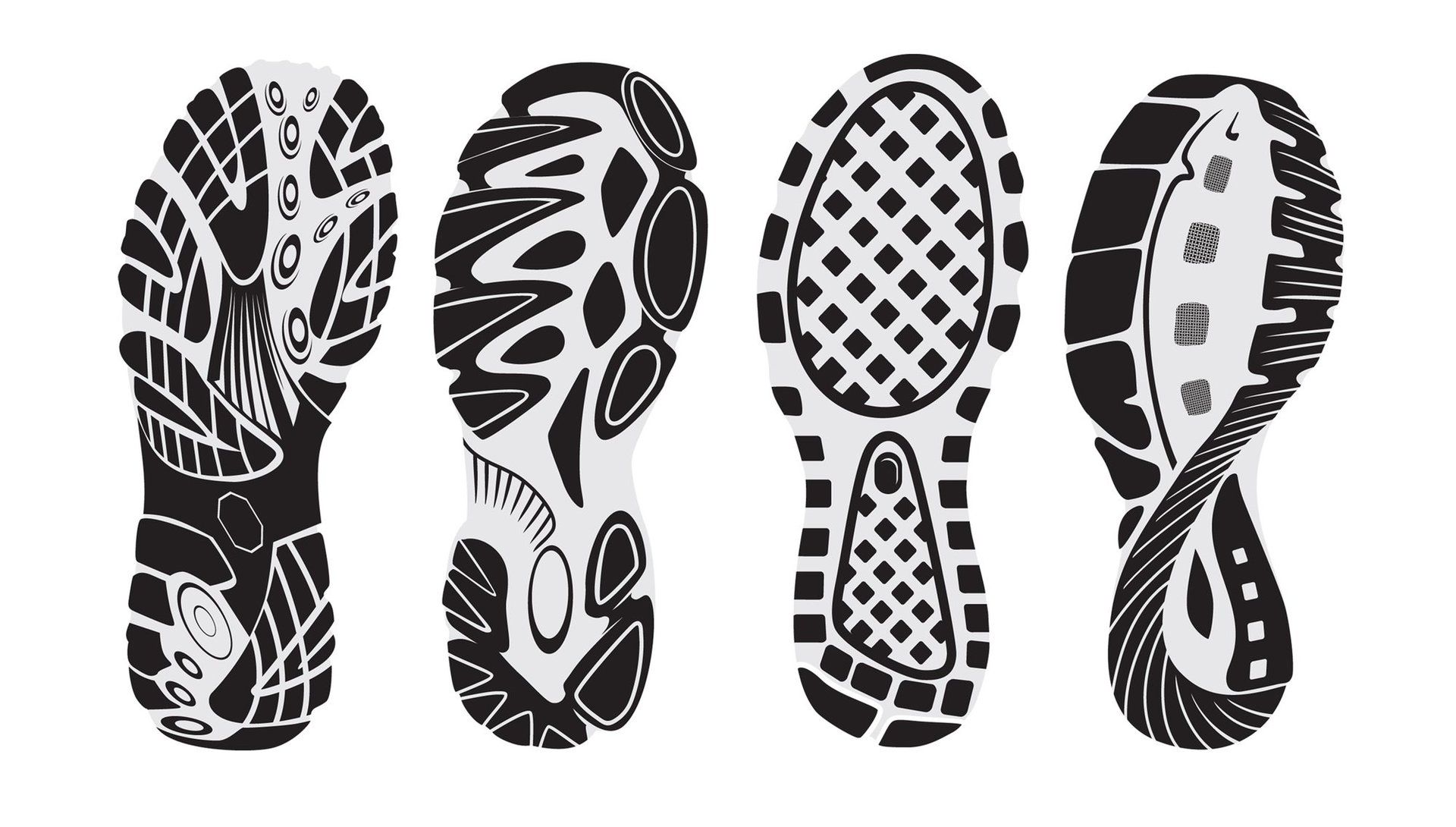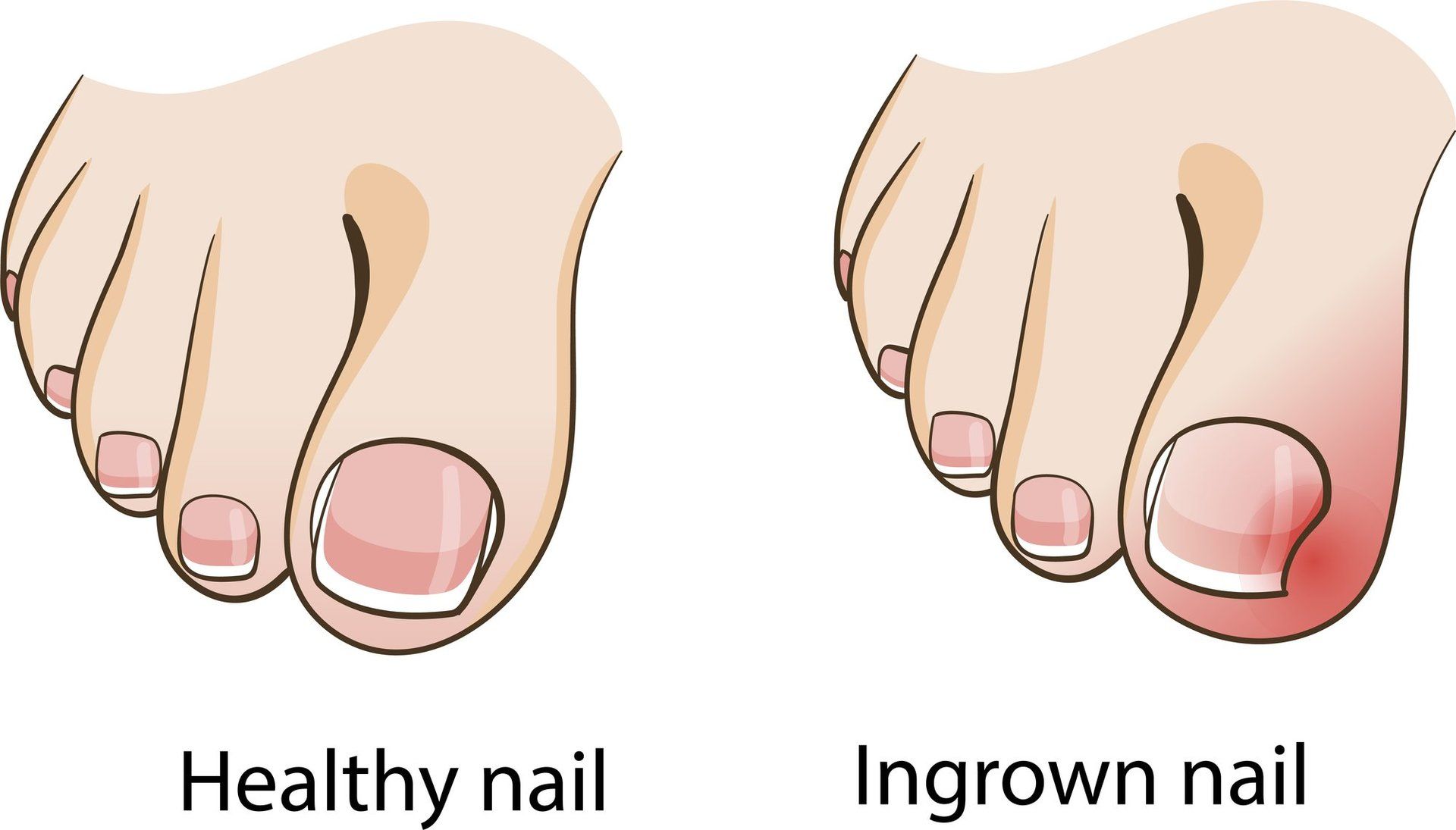Most of the common foot problems that bother active middle-aged people are restricting and easily treated if detected early. In most cases, conservative treatment will enable patients to return to activity relatively quickly. Middl~aged men and women are participating in a variety of exercises and athletic activities more than ever before. As a result, they are more vulnerable to foot and foot-related injuries. Fortunately, most foot ailments are minor and can be treated conservatively. Early diagnosis and treatment are keys to returning these active people swiftly and safely to their sports.
Hallux Valgus
Pathologic changes can lead to an angulation of the great toe and enlargement of the medial portion of the first metatarsal and thickening over the medial bursa. The causes of hallux valgus include, but are not limited to, heredity, metatarsus primus varus, pes planus, rheumatoid arthritis and neurologic disorders. Most patients affected by the disorder are middle-aged women.
Patients usually have pain over the first metatarsophalangeal (MTP) joint and have difficulty wearing shoes because of the medial prominence and associated toe deformities. Occasionally, the degree of deformity is not always consistent with the severity of the symptom and this needs to be considered during treatment. Shoes with a wide toe box and sufficient insole padding are recommended to make the patient more comfortable. Orthotics that support the longitudinal arch and redistribute the pressure areas may give some relief of symptoms. This treatment plan is often successful. However, surgery is an option when conservative treatment has failed.
Hallux Rigidus
Hallux rigidus is a degenerative arthritis in the first MTP joint and may be accompanied by pain, diminished range of motion and difficulty wearing shoes. Participants in sports with running or jumping may be predisposed to this aliment.
Treatment of this condition includes wearing low-heeled shoes with adequate width and depth to accommodate the increased bulk of the joint. The use of an orthotic or rigid insole to reduce the stress across the MTP joint may also be beneficial. If conservative management is not successful, then surgery is another option.
